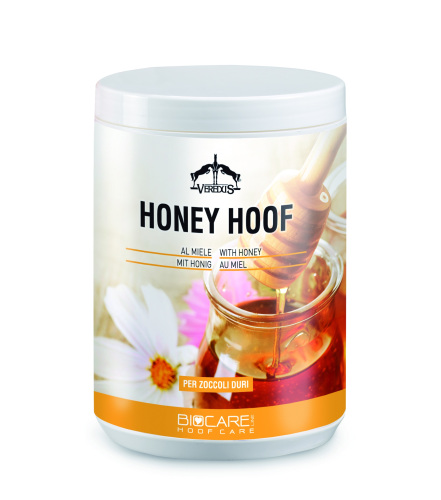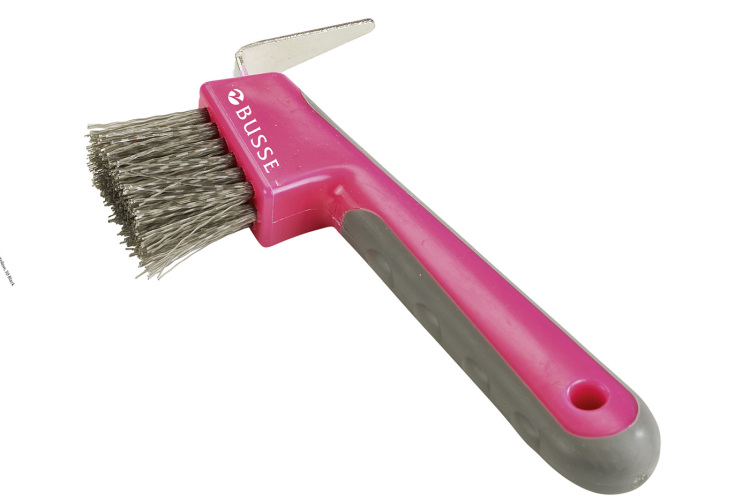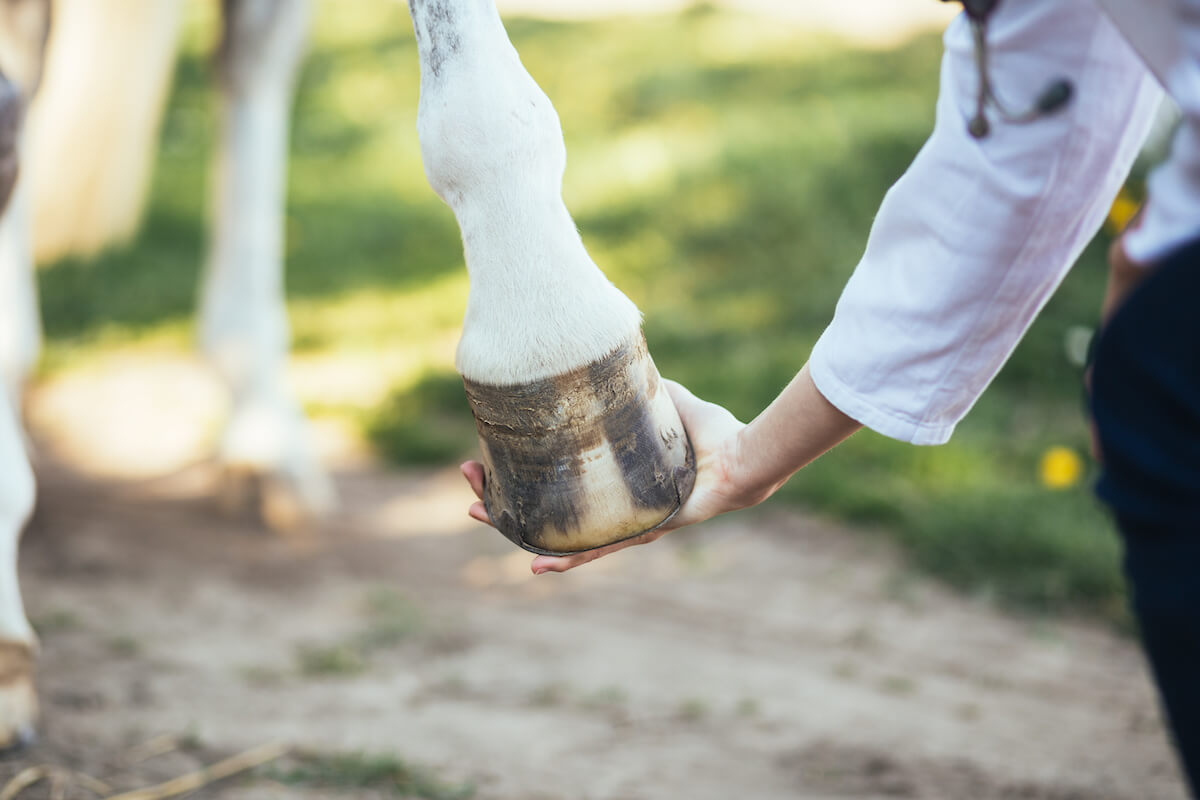
Minden lótulajdonos a legjobbat akarja patás barátjának. Emiatt érdemes tudni, hogyan kell megfelelően gondoskodni a paták állapotáról, mert egészséges lábak nélkül nincs egészséges ló. Ebben a cikkben arra fogunk összpontosítani, hogy mi a nyírrothadás és mi okozza. Azt is elmondjuk, hogyan lehet megelőzni, kezelni ezt az állapotot, és milyen készítményeket kell használni.
A ló patái és lábai különösen érzékenyek a sérülésekre, betegségekre és horzsolásokra. A megfelelően megvigyázott egész pata ütéscsillapító funkcióval rendelkezik. Ahhoz, hogy lovunk patái egészségesek legyenek, rendszeresen tisztítsuk meg, vegyük igénybe egy megbízható kovács szolgáltatásait, valamint ügyeljünk a ló ellenállóképességére, környezetének higiéniájára (száraz aljzat, forgács). Ezzel a módszerrel jelentősen csökkenthetjük a különféle állapotok, köztük a nyírrothadás és a csüdsömör kialakulásának valószínűségét – mely az elhanyagoltság betegségeként ismert.
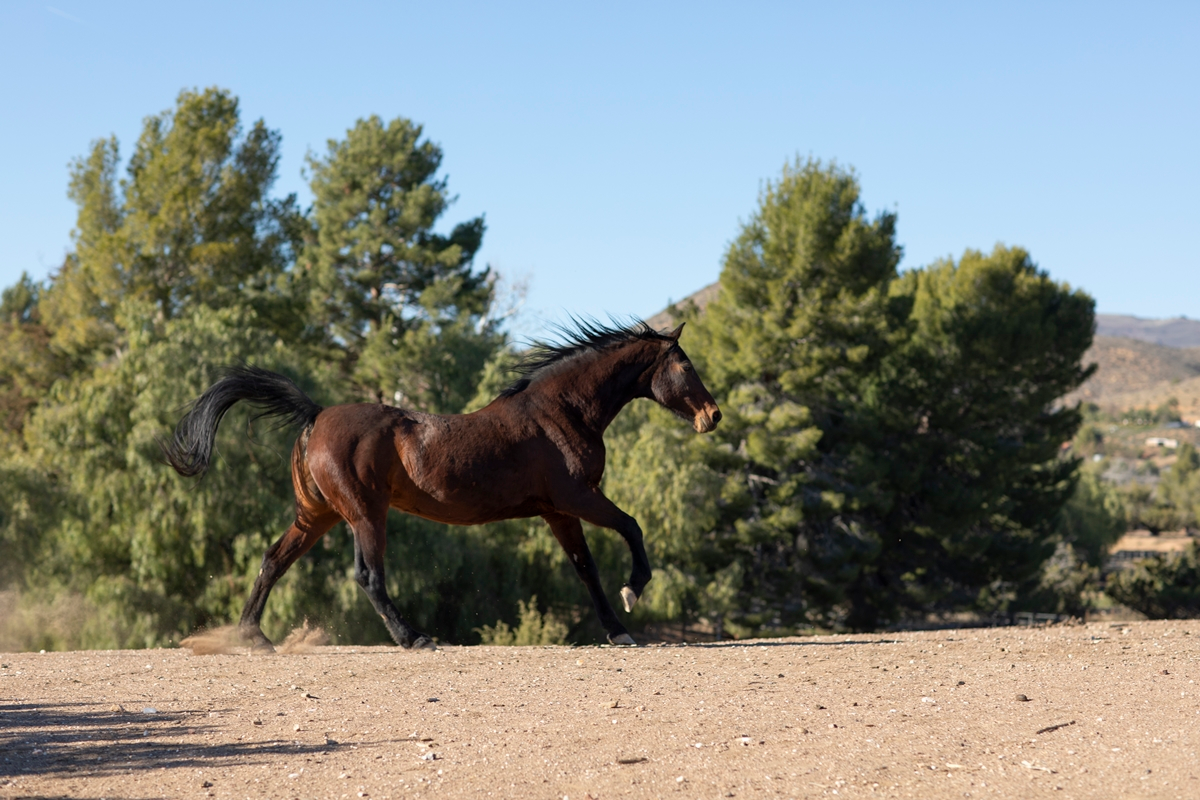
Mi a patanyír és mit jelent az, hogy rohad?
Még a kezdő lovasoknak sem okoz gondot a pata nyír részére rámutatni. A pata jellegzetes, háromszög alakú, puha és rugalmas része. Feladata az ütések elnyelése. A patanyír szerkezete magában foglalja: a sarokél, a talpszár és nyírszár, amelyeket a középső nyírbarázda választ el egymástól. Az egészséges nyírnak száraznak és rugalmasnak kell lennie. A nyír közepén lévő mélyedésnek láthatónak kell lennie, de nem egyértelműen mélynek.
Előfordul, hogy a nyír barázdáiban anaerob baktériumok vagy gombák kezdenek kifejlődni, amelyek beindítják a rothadási folyamatokat - ekkor betegség lép fel. Könnyen felismerhetők: sötét váladék látható, a rothadó nyír egyenetlenné, túl puhává válik (töredékek eshetnek le), végei kikopnak, kellemetlen szagot érzünk. Nyírrothadás esetén a kezelést a lehető leghamarabb el kell kezdeni, hogy megelőzzük a patarák kialakulását.
Rothadó nyír tünetei
A nyírrothadás egy olyan állapot, amelyet a rendszeres pataellenőrzés során viszonylag könnyű észrevenni. Előfordul azonban, hogy a gazda csak akkor tudja észrevenni a betegség jeleit, ha a ló már egyértelműen sánta. Ilyen helyzetben érdemes odafigyelni az állat mozgására. Ha a ló "lábujjtól" sétál mozgás közben, az azt jelenti, hogy fájdalmat érezhet a nyír és a pata hátulsó része miatt. A pata rothadó nyírját jelezheti az is, ha a ló nagy érintési érzékenységét mutat a paták tisztítása során. A patát, amelyben a rothadási folyamat megy éppen végbe, a következők jellemzik:
puha és fájdalmas tapintású nyír
puha és széteső patanyír, mely könnyen szétválik és leválasztható. Kialakulhatnak ún. "zsebek", amelyekben a sár összegyűlik
piszkosszürke, sötét folyadék gyűlik össze a barázdában
kellemetlen, szúrós szag
mély nyírbarázda, nem látható az alja.
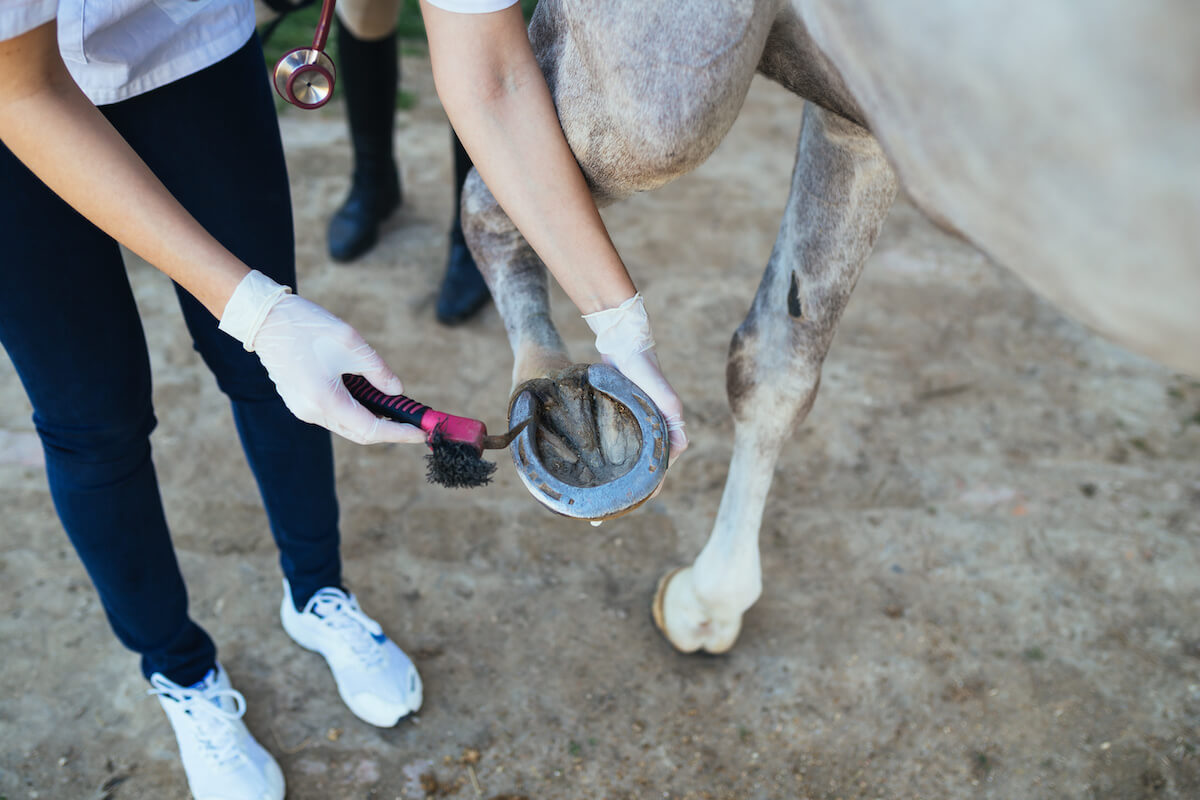
Rothadó nyír okai
A rothadó nyír fontos információ a gazdi számára, hiszen ez a ló immunrendszerének gyengébb állapotáról ad jelet. A károsodott vérkeringésű paták érzékenyebbek a fertőzésekre, mint a megfelelően működő paták. A nyírrothadást bakteriális vagy gombás fertőzés okozhatja. Emiatt, a betegség során a rothadásra jellemző kellemetlen szag figyelhető meg. Az ezért felelős mikrobák nedves körülmények között szaporodnak, ezért a rothadó nyír gyakran megfigyelhető a nedves és sáros talajon tartott lovaknál. A pata nyírjának rothadását okozó leggyakoribb tényezők közül a következőket különböztetjük meg:
túl puha talaj, nedves alom a bokszban vagy sár a karámban
a szerkezet nélküli, strukturálatlan szénhidrátok feleslege a ló étrendjében
helytelen körmölés, amely gyengíti és negatívan befolyásolja a pata sarkát illetve a nyírját
keskenyített pata, a sarka túl alacsony/magas
károsodott vérkeringés a patában
rendellenesen fejlett nyír a patákban
nincs elég szabad mozgás
nyomelemek hiánya, leggyakrabban réz és cink
allergiás reakció
Hogyan előzzük meg a nyírrothadást?
A nyírrothadás elkerülésének legfontosabb módja a profilaxis, azaz a ló számára optimális tartási feltételek biztosítása, ami jelentősen csökkenti ennek a betegségnek a kockázatát. Az abszolút alap a paták napi tisztítása illetve állapotának ellenőrzése. A sárral és a kitisztítatlan trágyával teli pata különösen érzékeny a fertőzésekre. A lovakat tiszta alommal kell ellátni a bokszban és száraz talajt kell biztosítani a karámban. Ezenkívül nem szabad megfeledkezni az immunitást építő kulcselemről, amely a megfelelő étrend. Ugyanilyen fontos a megfelelő kovácsolás vagy körmölés, amitől a pata megfelelően működik.
A patanyír nemcsak a ló környezetében lévő szennyeződések miatt kezdhet rothadni, hanem a pata mozgás közbeni helytelen pataállástól is, amelyet a nem megfelelő körmölés okoz. Kevesen tudják, hogy a nyírnak mozgás közben érintenie kell a talajt – ekkor biztosítja a pata megfelelő működését ütéscsillapítóként és biztosítja a ló ezen testrészének vérellátását. Ellenkező esetben a higiénés körülmények és a jó minőségű takarmány ellenére is kialakulhat a betegség.
A már fertőzött paták megfelelő kezelésével megvédheti kedvencét az előrehaladott nyírrothadástól. Hiába lesz a gyógyszerhasználat, ha nem keressük az okokat, és nem javítunk a ló tartási körülményein. Érdemes a pata szarujának töredékét vizsgálatra (a pata unguloszkópiája) leadni, annak elemi összetételének vizsgálata érdekében. Ez a megoldás lehetővé teszi, hogy megfelelő takarmányozási tervet készítsen a lónak, állatorvosa segítségével, és alkalmazza a szükséges kiegészítőket. A ló étrendjének hiányosságainak pótlása javítja immunitását, patáinak állapotát és védelmet nyújt a pata nyírjának fertőzése ellen.
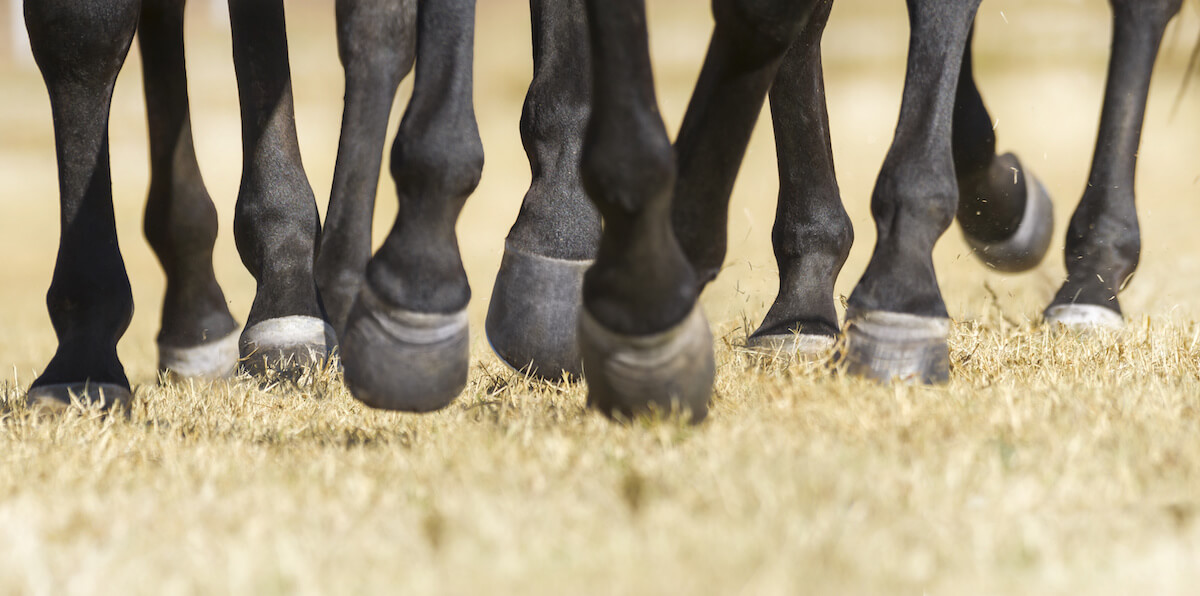
Rothadó nyír kezelése
Ha a nyírrothadás jeleit észleljük lovunkon, akkor állatorvossal és kovácsmesterrel egyeztetve gyorsan kell intézkedni. Tisztítsa meg a nyírt patapucolóval, mossa meg, majd rendszeresen fertőtlenítse megfelelő szerekkel, mint például: réz-szulfát, hidrogén-peroxid, antibiotikum spary formában vagy speciális nyírrothadás elleni készítmények. Némelyikük kenőcs formájú, amelyet a baktériumok által megtámadott "rések" helyére kell bedörzsölni. Folyékony készítmények esetén egy tiszta tamponádot áztathatunk be a termékkel és helyezhetjük be a fertőzöttb barázdákba.
Az Equishop Lovasboltban vény nélkül kaphatók a pata nyírrothadásához készült speciális készítmények, amelyek sokrétűen hatnak: fertőtlenítenek, védőréteget képeznek, táplálják a patát és támogatják a gyógyulási folyamatot. Érdemes egy üveg készítményt magunknál tartani mindig, hogy pataproblémák esetén azonnal használhassuk. Az is jó megoldás, ha a pata nyírjait megelőzésképp időnként a megfelelő készítményekkel kimossuk. Az Equishop Lovasboltban a pata nyírjának rothadása ellen védő készítmények rendelhetők:

Ne feledjük, hogy a megelőzés az alapja a betegség kialakulásának kockázatának csökkentése. A paták állapotának rendszeres ellenőrzése lehetővé teszi, hogy időben észrevegye a betegség első tüneteit, és időben döntsön a rothadó nyír kezeléséről. Ha nyugatalíntó tüneteket észlel, először mindig forduljon állatorvosához.
Ha a pata nyírjának ápolásához keres preparátumokat, nézze meg kínálatunkat: Belépés
Hírek az Equishop Lovasboltból:











